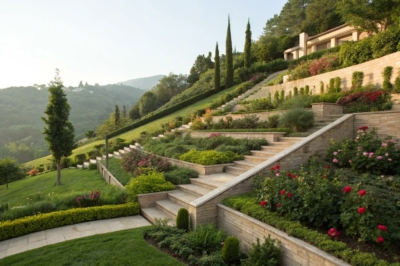1. Terraced Garden Delight
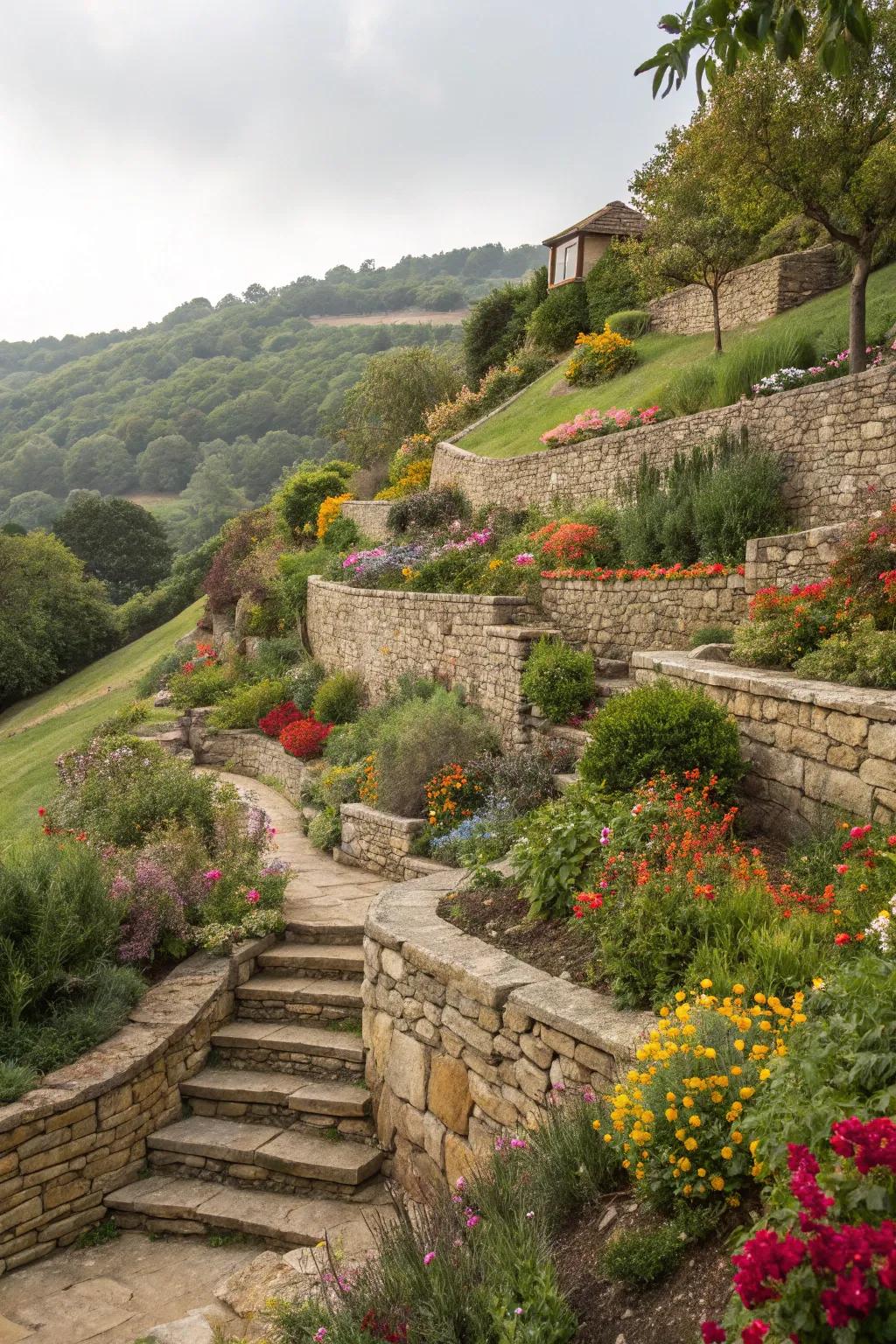
Turning a sloped garden into a series of terraces can create flat spaces perfect for planting or lounging. I’ve found that using natural stone for the retaining walls gives a timeless look that blends seamlessly with the greenery.
Useful items to consider:
- Natural Stone Retaining Wall Kits: Transform your garden with these elegant stone kits, perfect for durable and timeless terraces.
- Garden Landscape Fabric: Prevent weed growth and enhance soil health with this essential garden landscape fabric.
- Terrace Planters: Enhance your terraced garden with stylish planters that merge functionality with aesthetic appeal.
2. A Cascade of Plants
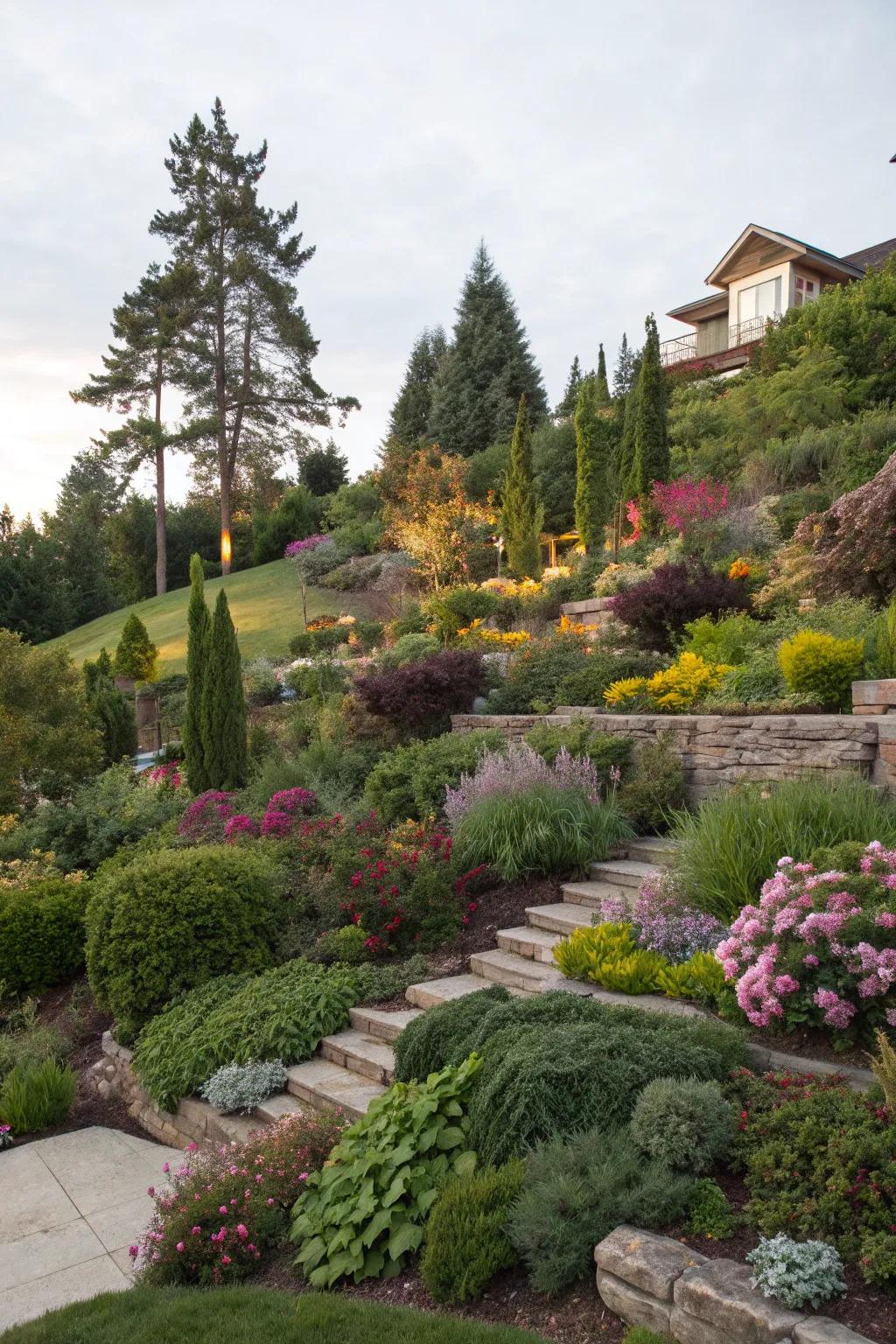
Layering different types of plants can add depth and color to your slope. In my garden, mixing perennials with shrubs gives a vibrant tapestry that changes with the seasons.
Explore these options:
- Perennial Flower Seed Mix: Transform your garden with vibrant, seasonal colors. Simple to plant and maintain.
- Decorative Garden Shrubs: Enhance your landscape with lush, green foliage that provides year-round beauty and structure.
- Garden Landscape Edging Stones: Define your garden layers with these classic stones for an elegant, finished look.
3. Stepping Stones and Pathways
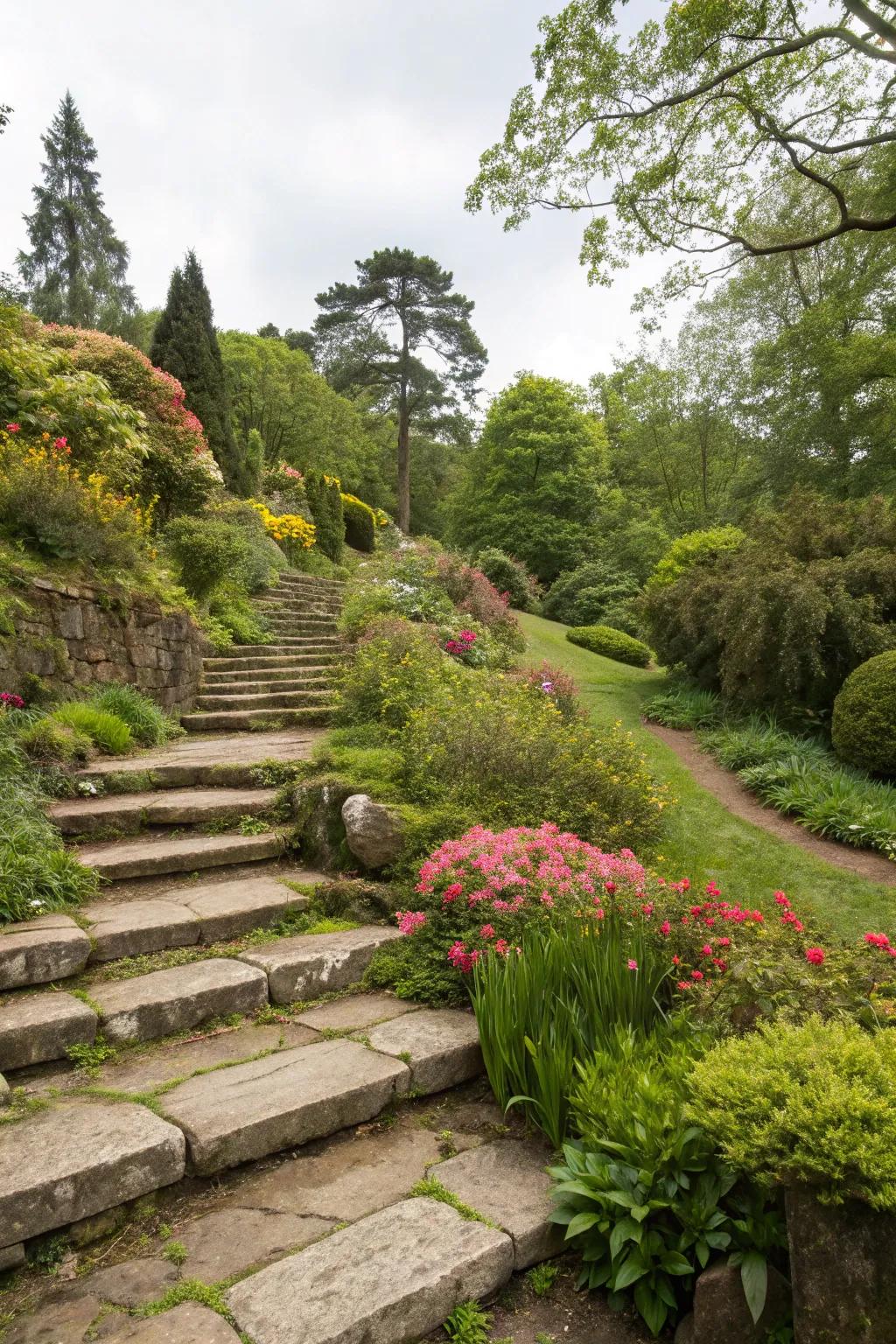
Adding stone steps or pathways can make navigating your sloped garden a breeze. I love using irregular stones for a more natural look, surrounded by creeping plants to soften the edges.
Items that may come in handy:
- Natural Irregular Stone Pavers: Enhance your garden’s beauty and functionality with natural stone pavers for a seamless, elegant path.
- Creeping Ground Cover Seeds: Soften pathway edges with lush creeping plants, adding color and texture effortlessly to your garden.
- Garden Pathway Edging: Define your pathways with durable edging, creating clean lines and a polished look in your garden.
4. Retaining Walls with Style
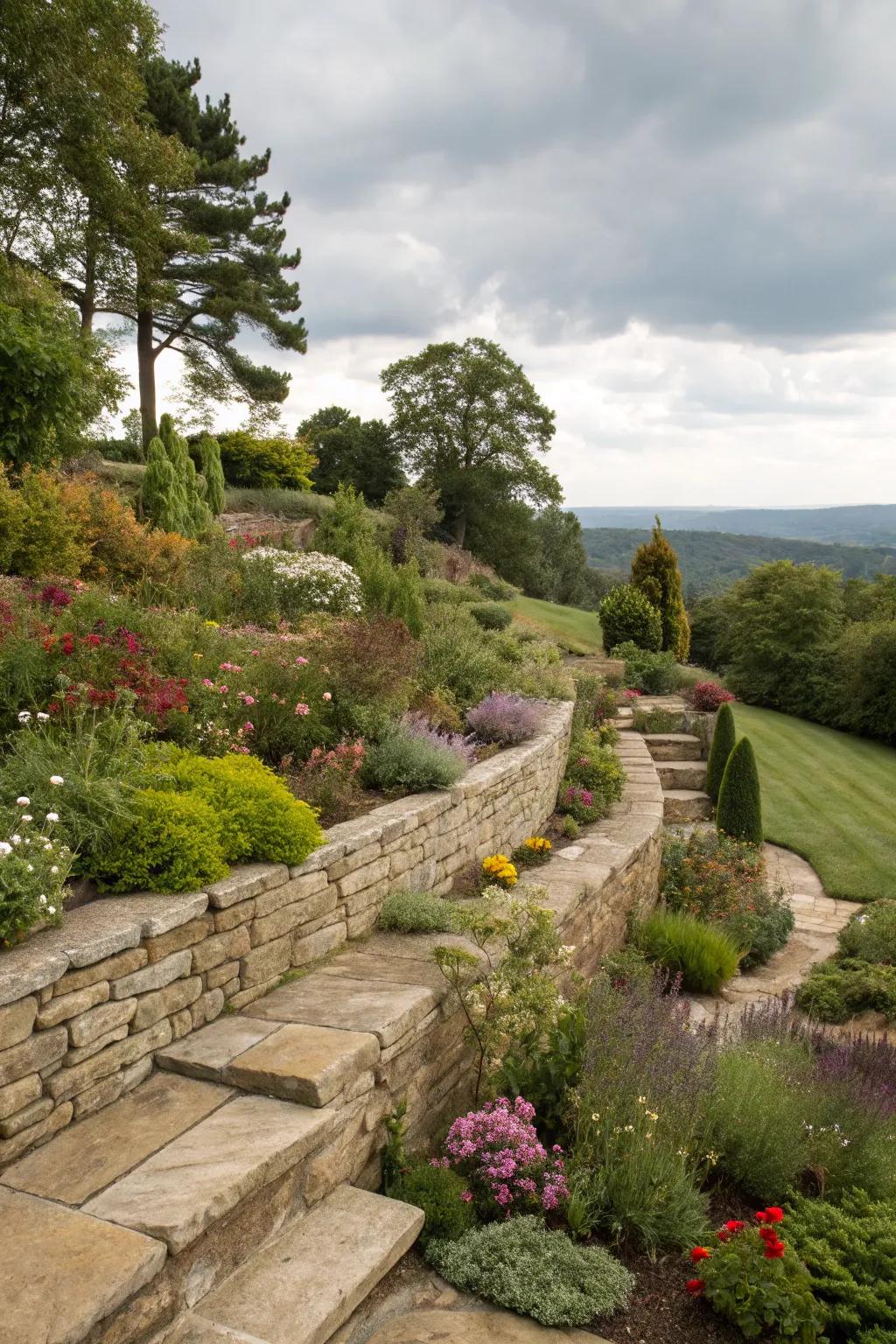
Constructing retaining walls can prevent erosion and define beautiful garden levels. I prefer using local stone, which not only looks great but also supports the environment.
Try these:
- Natural Stone Pavers: Enhance your garden’s look with natural stone pavers, bringing elegance and durability to your space.
- Garden Landscape Edging: Define your garden layers perfectly with versatile landscape edging, adding a neat and tidy finish.
- Retaining Wall Blocks: Elevate your garden design with durable retaining wall blocks, ideal for creating sturdy garden tiers.
5. Winding Pathways
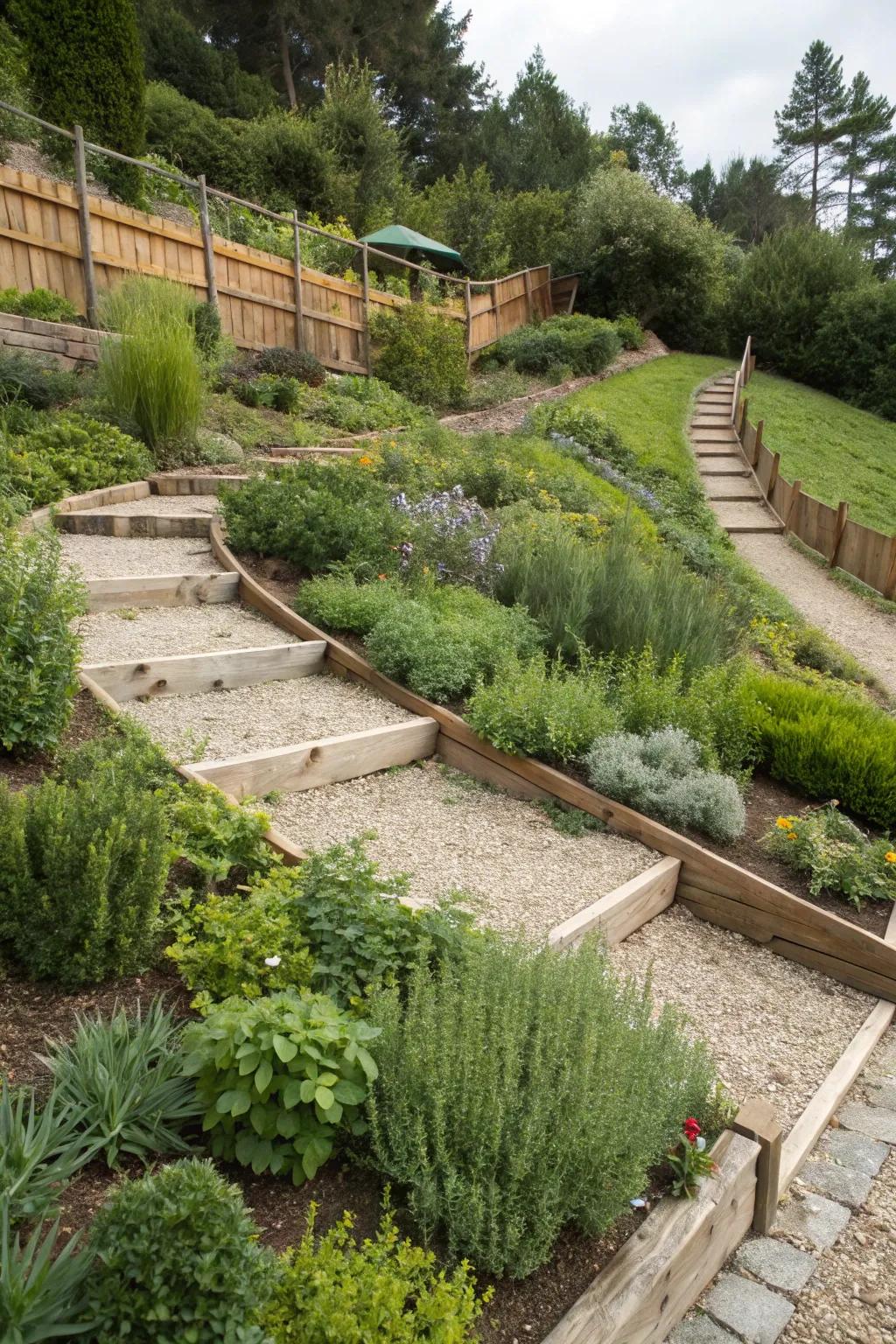
Designing winding pathways can lead visitors on an enchanting journey through your garden. I like lining paths with fragrant herbs that release their scent as you walk by.
Products that could assist:
- Wooden Garden Pathway Edging: Add structure to your garden paths with durable wooden edging that blends seamlessly with nature.
- Fragrant Herb Plant Kit: Enhance your garden walkway with a selection of fragrant herbs for delightful scents all year.
- Gravel Ground Cover for Pathways: Create stunning pathways with easy-to-install gravel that ensures stable and beautiful walkways.
6. Enchanting Lighting
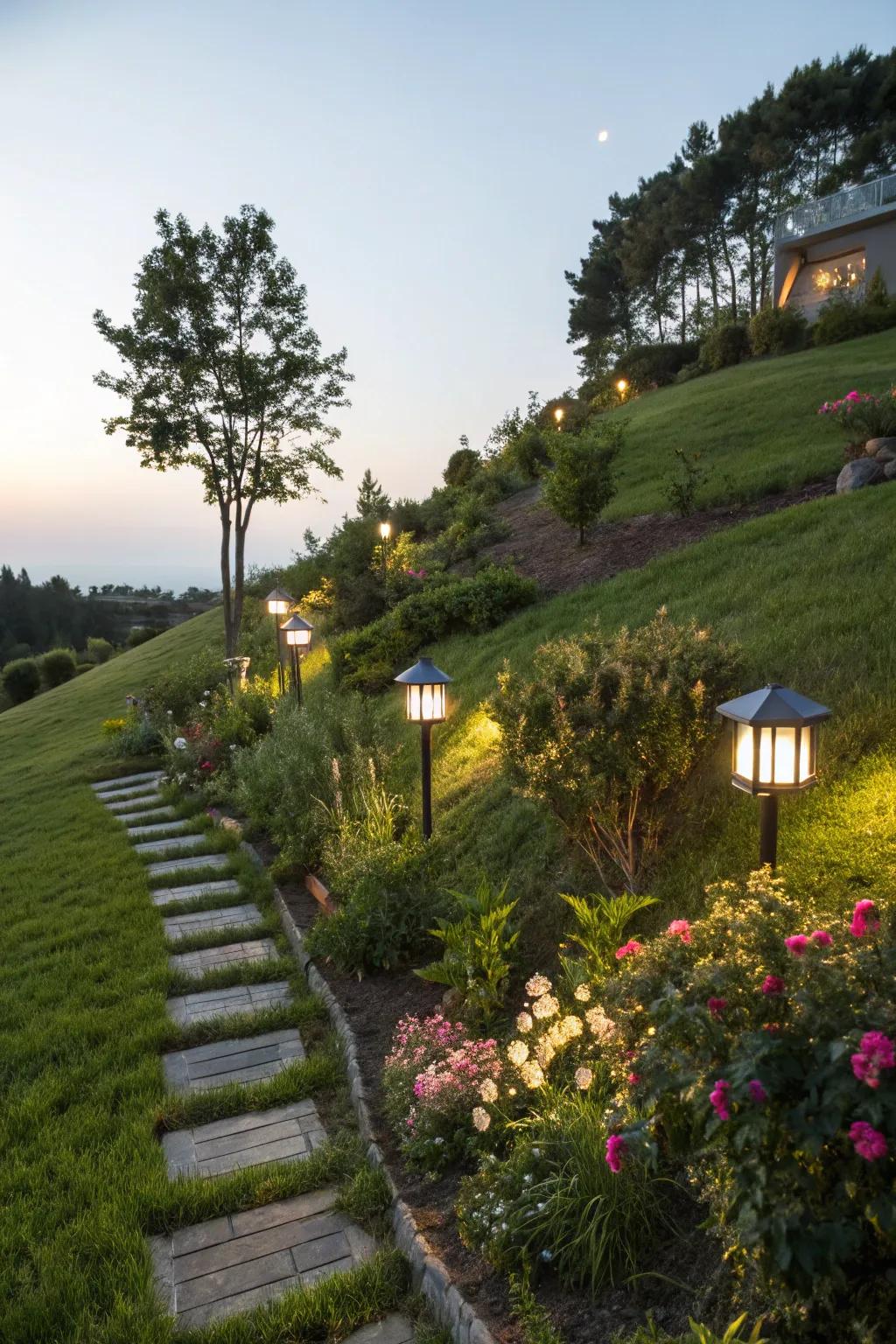
Strategically placed lighting can transform your garden into a magical retreat at night. I love how solar-powered lights highlight paths and plants, creating a warm, inviting glow.
A few choices to try:
- Solar Pathway Lights: Illuminate your garden path beautifully with solar lights for an inviting nighttime glow.
- LED Landscape Spotlights: Highlight garden features with LED spotlights, enhancing beauty during evening hours effortlessly.
- Decorative Garden Lanterns: Add charm with decorative lanterns, creating a cozy and elegant garden atmosphere.
7. Rock Garden Charm
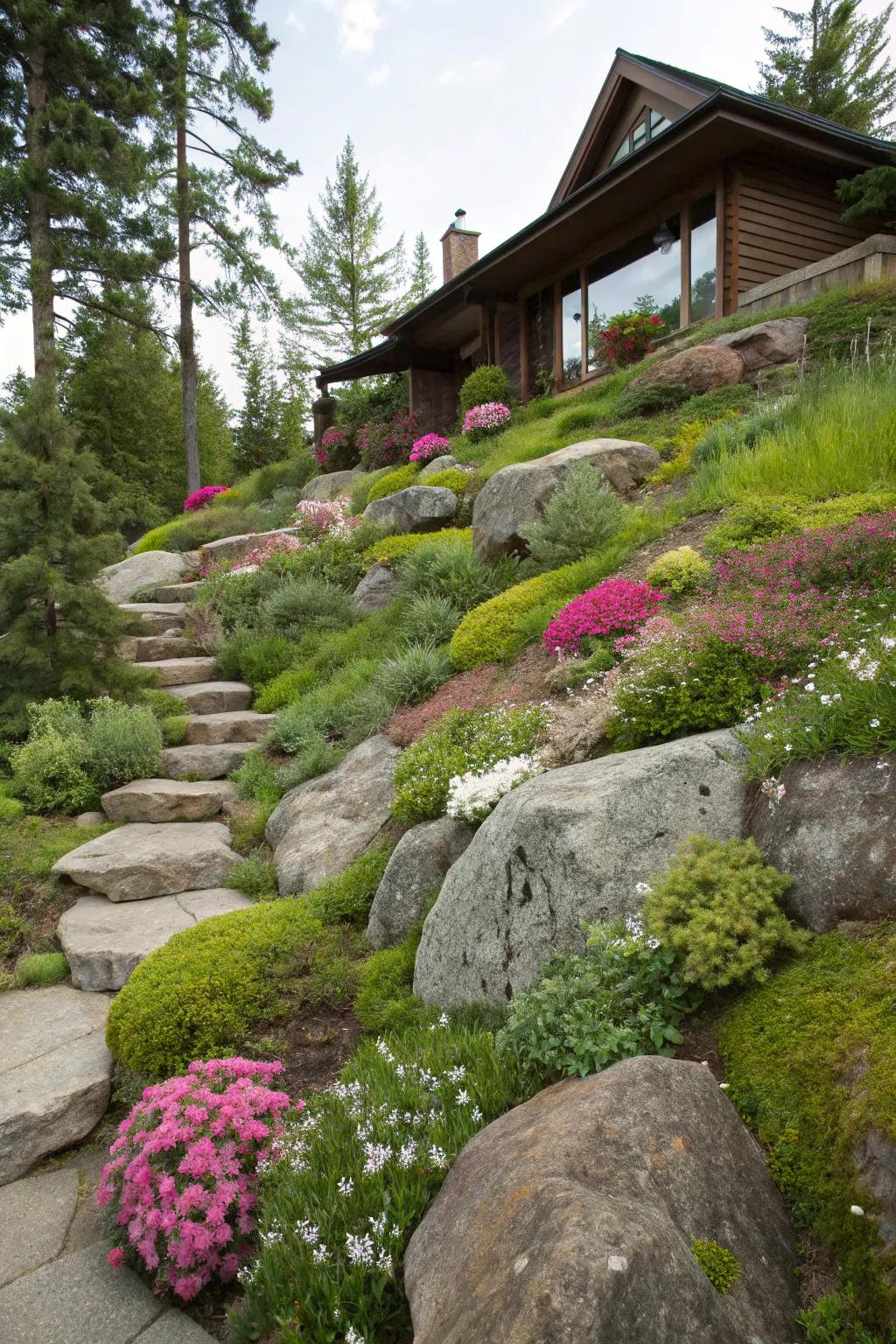
Utilizing rocks and boulders not only stabilizes a slope but also adds natural charm. I enjoy arranging larger stones with alpine plants for a low-maintenance rock garden.
These products might help:
- Decorative Garden Boulder Set: Enhance your garden’s natural look with realistic boulders; perfect for structural elegance.
- Alpine Plant Collection: Discover hardy alpine plants; ideal for low-maintenance beauty on rocky slopes.
- Rockery Soil Mix: Optimize plant growth with soil mix designed for perfect rock garden drainage.
8. Herb Spiral Surprise
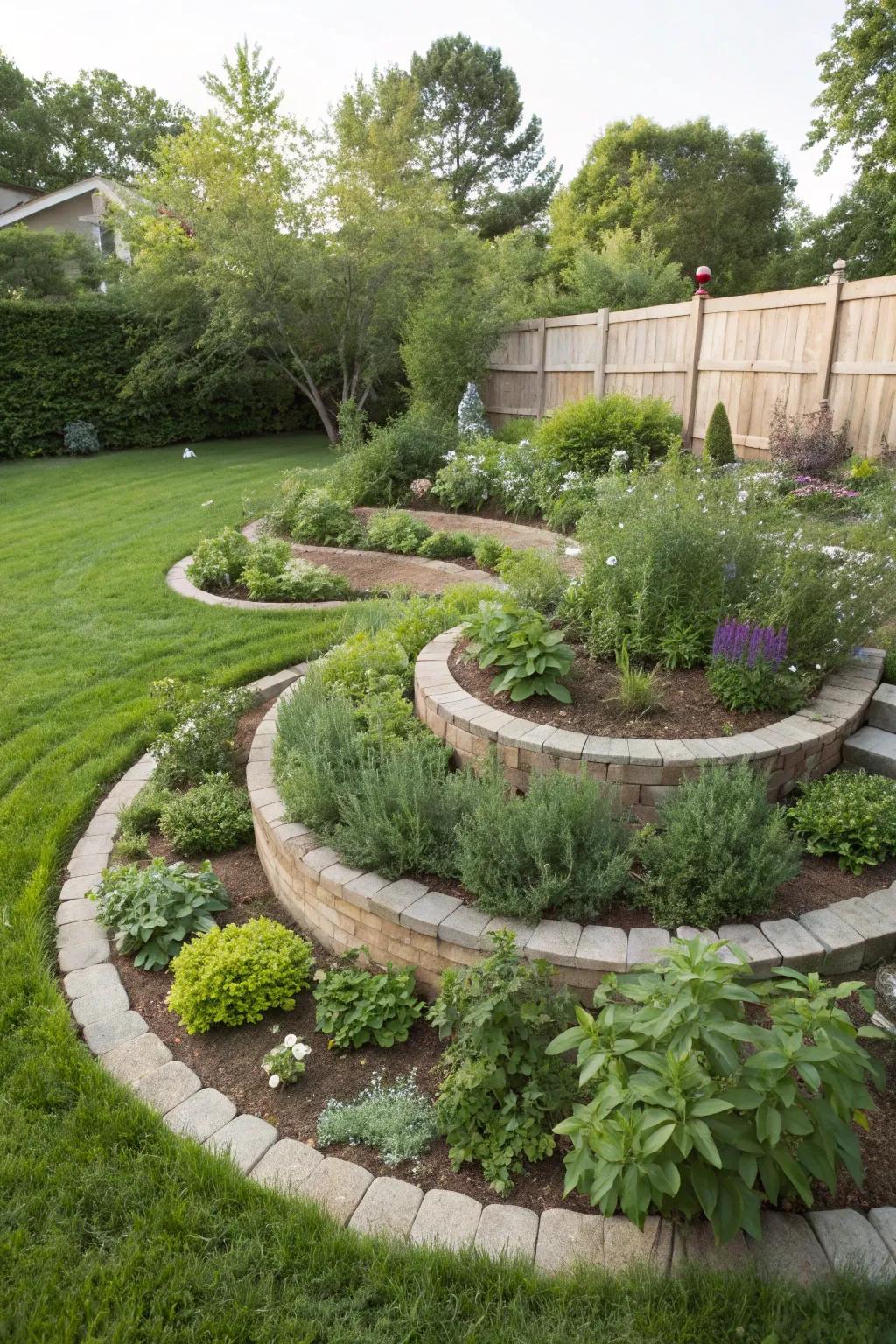
Create a herb spiral on your slope for a functional and eye-catching feature. I love how it maximizes space and provides easy access to a variety of herbs.
Possibly handy products:
- Stackable Garden Stone Edging Set: Create elegant borders for your herb spiral with these adjustable, stackable stone edgings.
- Herb Garden Starter Kit: Kickstart your herb spiral with this comprehensive kit featuring a variety of popular herbs.
- Drip Irrigation Kit for Raised Beds: Keep your herbs well-watered effortlessly with this easy-to-install drip irrigation system.
9. Zen Garden Escape

Create a Zen garden with sand, stones, and minimal planting for a serene retreat. I enjoy the meditative process of raking the sand and arranging stones.
A few suggestions:
- Zen Garden Sand Kit: Transform your garden with fine white sand perfect for creating peaceful, raked patterns.
- Decorative Garden Stones: Enhance your Zen garden with a selection of smooth, natural stones for harmonious design.
- Zen Garden Rake Set: Elevate your meditation with a durable rake set, ideal for crafting intricate sand patterns.
10. Edible Garden Layers
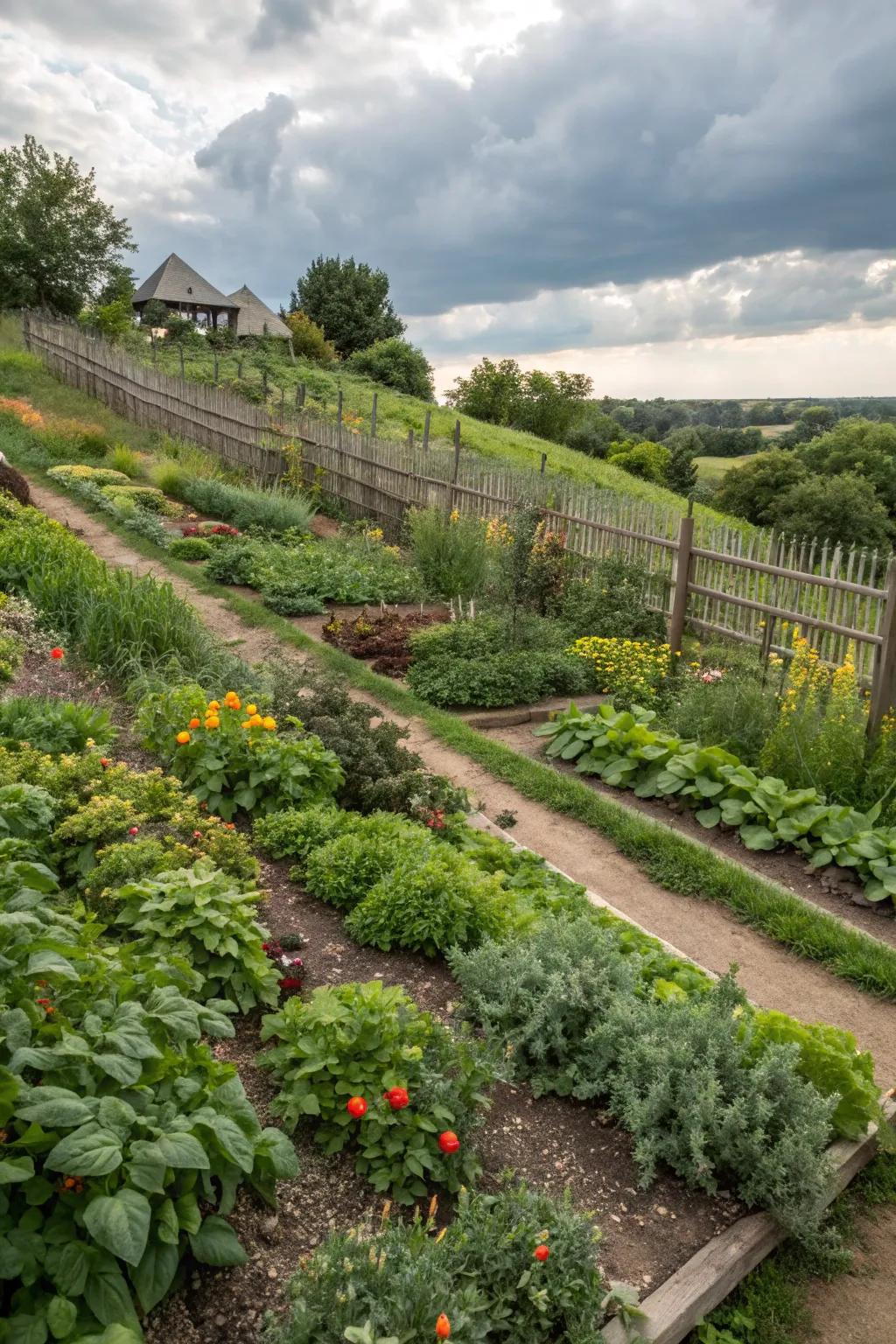
Plant edible crops like berries and herbs on your slope for a tasty, sustainable garden. I enjoy the convenience of harvesting fresh produce right from my backyard.
Possibly helpful picks:
- Raised Garden Bed Kit: Optimize your space and grow more with a raised garden bed kit, ideal for slopes.
- Berry Bush Starter Pack: Start your berry garden effortlessly with this berry bush starter pack for fresh, homegrown produce.
- Herb Garden Planting Kit: Cultivate your favorite herbs easily with a complete herb garden planting kit for fresh flavors.
11. Mystical Fairy Garden
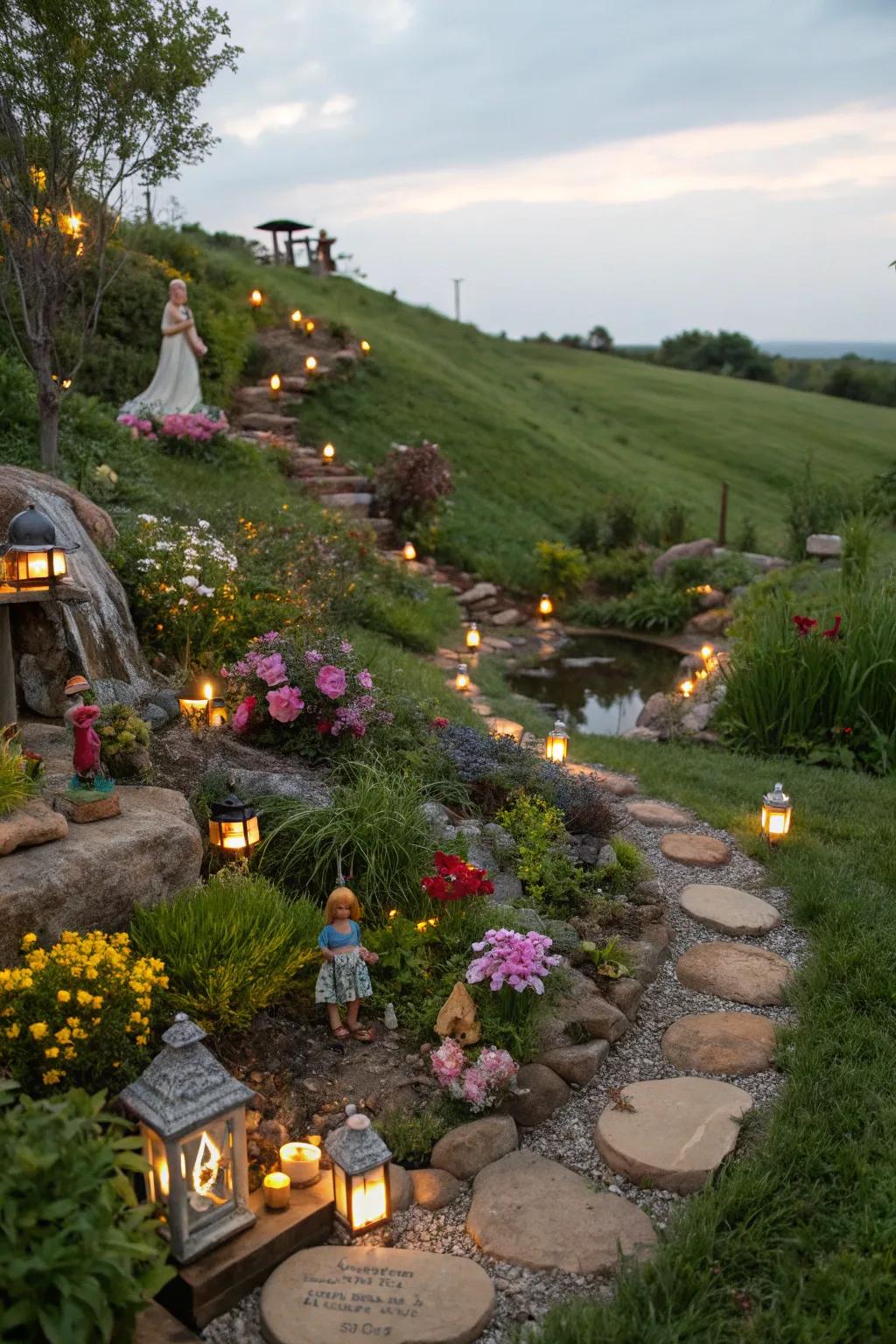
Create a fairy garden with whimsical decorations and tiny plants. It’s a delightful surprise that never fails to spark joy and imagination for both kids and adults.
Give these a look:
- Miniature Fairy Garden Figurines: Add charm and magic with these enchanting fairy figurines, perfect for any whimsical garden setting.
- Solar Garden Pathway Lights: Illuminate your fairy garden pathways with these solar-powered lights for a magical evening glow.
- Miniature Garden Bridge: Create a mystical crossing in your garden with a beautifully crafted miniature bridge.
12. Sculptural Elements
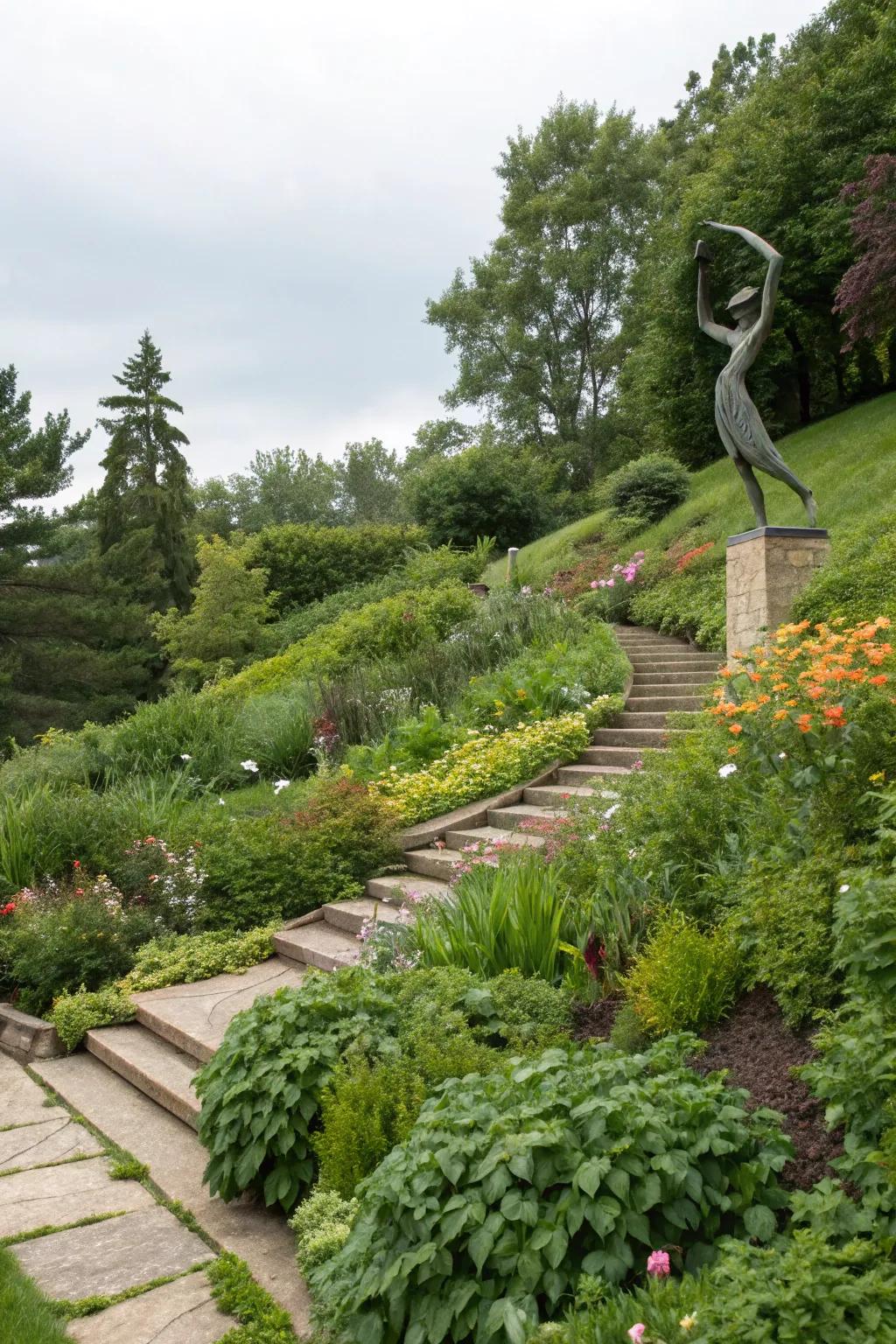
Adding sculptural features like statues or art pieces can give your garden a unique character. I enjoy finding local artists’ work to incorporate into my garden for a personal touch.
Check if these fit your needs:
- Outdoor Garden Statue: Enhance your garden’s charm with a unique outdoor statue; perfect for adding artistic flair.
- Metal Garden Art Decor: Add a modern twist to your garden with captivating metal art pieces that stand out.
- Decorative Garden Pedestal: Elevate your sculpture’s presence with a sturdy pedestal, giving it prominence in your space.
13. Waterfall Wonders
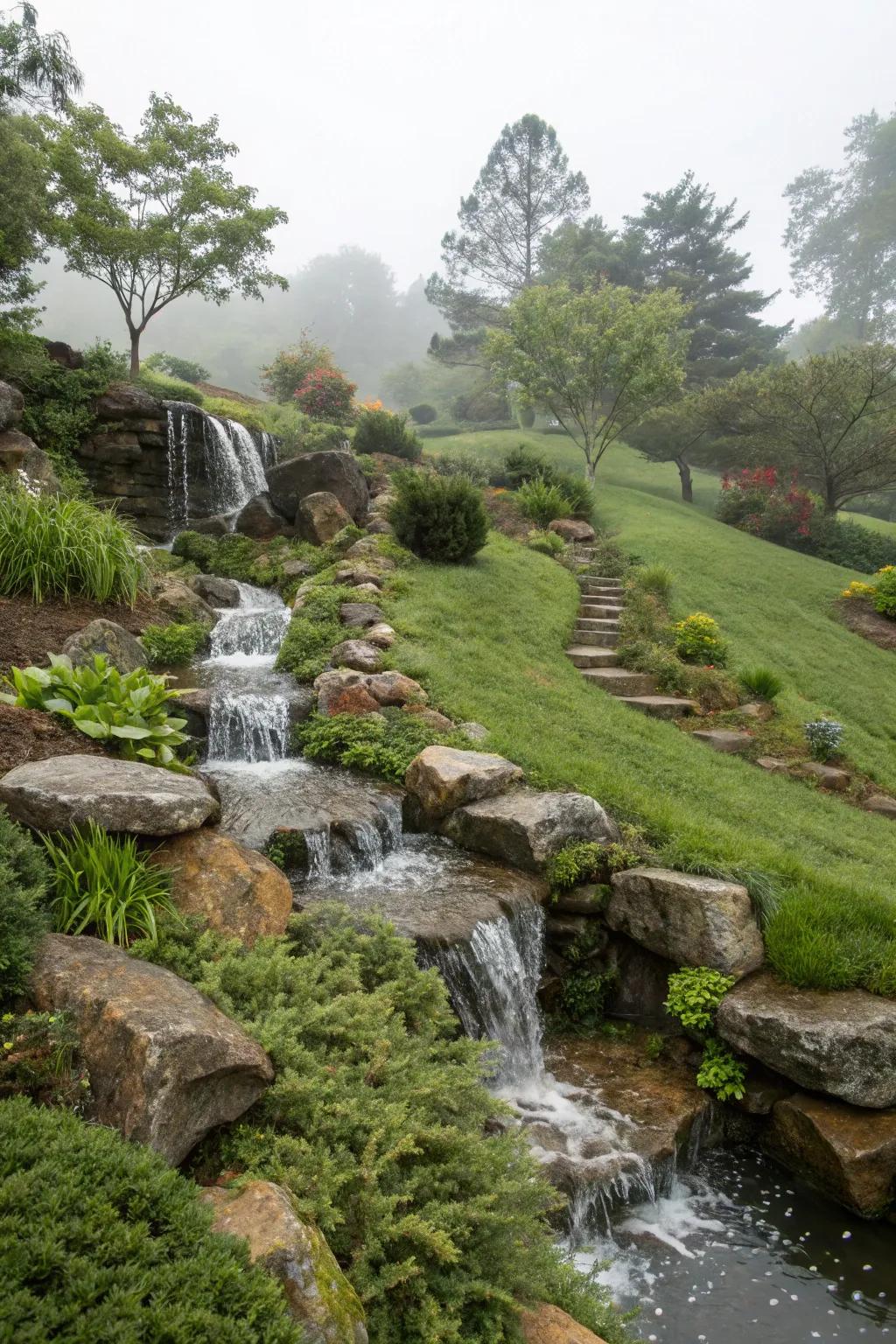
Incorporating a waterfall into your slope can create a tranquil escape. I find the sound of flowing water incredibly soothing, and it attracts birds and other wildlife.
Check these products out:
- Outdoor Waterfall Kit: Transform your garden slope with a stunning waterfall kit, bringing nature’s tranquility home.
- Pond Pump with Filter: Ensure smooth water flow and clarity with a reliable pond pump and filter for your waterfall.
- Garden Landscaping Rocks: Enhance your waterfall’s natural look using versatile landscaping rocks for a seamless garden design.
14. Vertical Gardens
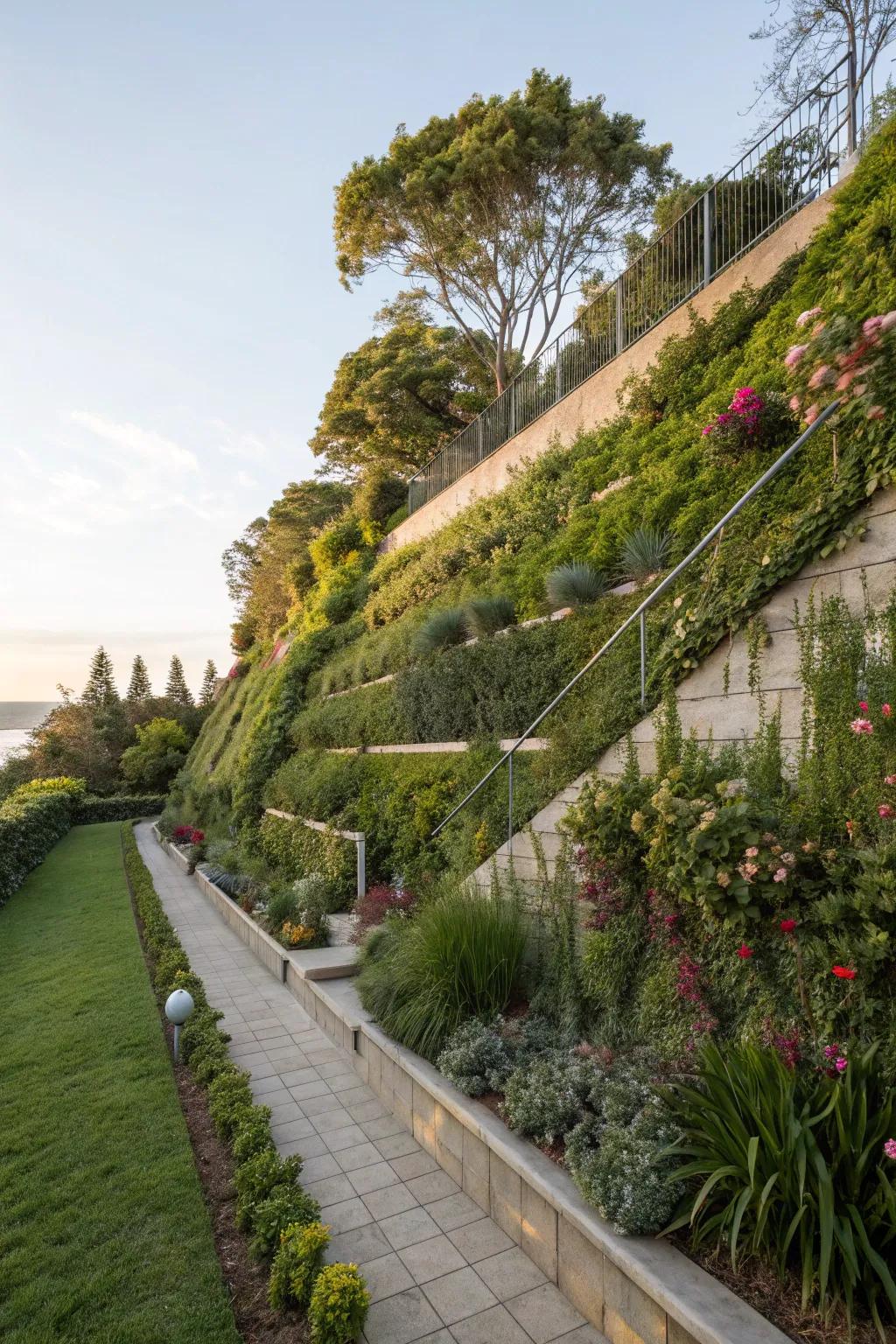
Use vertical gardening to make the most of your slope’s height. I’ve found that planting climbers and hanging planters on retaining walls adds a lush, green backdrop.
You might give these a try:
- Wall-Mounted Planter: Transform your garden with these sleek wall-mounted planters; perfect for maximizing space creatively.
- Climbing Plant Support Trellis: Encourage climbers with a sturdy trellis; enhance your garden’s vertical beauty effortlessly!
- Hanging Planter Set: Add dimension with a set of hanging planters; ideal for retaining walls and lush backdrops.
15. Seating with a View
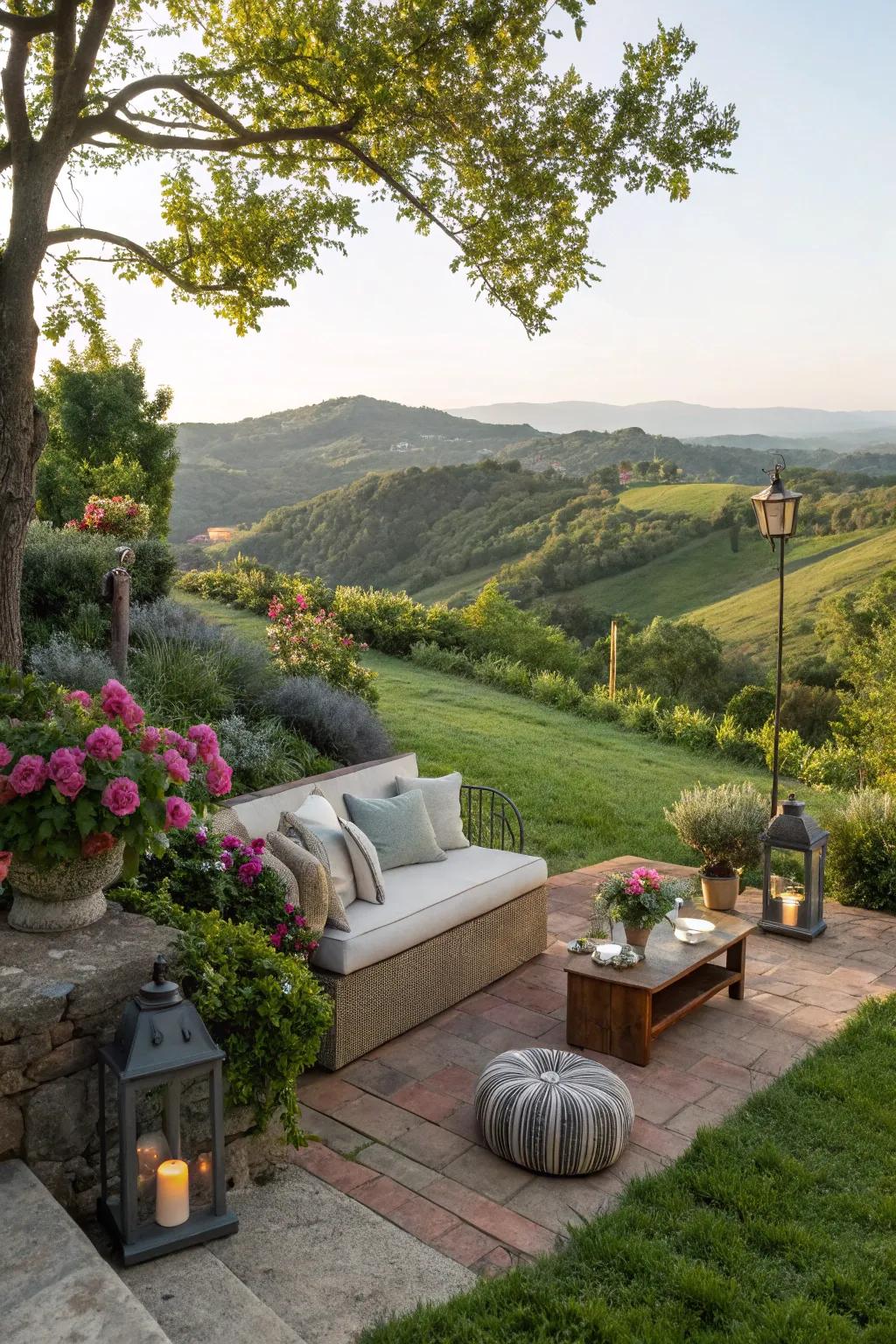
Creating seating areas on different levels of your slope lets you enjoy various perspectives. I love relaxing on a bench surrounded by fragrant flowers after a long day.
Might be a good match:
- Outdoor Patio Bench: Enhance your garden with a stylish patio bench and enjoy tranquil moments surrounded by nature.
- Weather-Resistant Outdoor Cushions: Add comfort to your seating area with weather-resistant cushions, perfect for outdoor relaxation.
- Decorative Outdoor Lanterns: Illuminate your garden with decorative lanterns for an enchanting evening ambiance.
16. Retreat with a Hammock
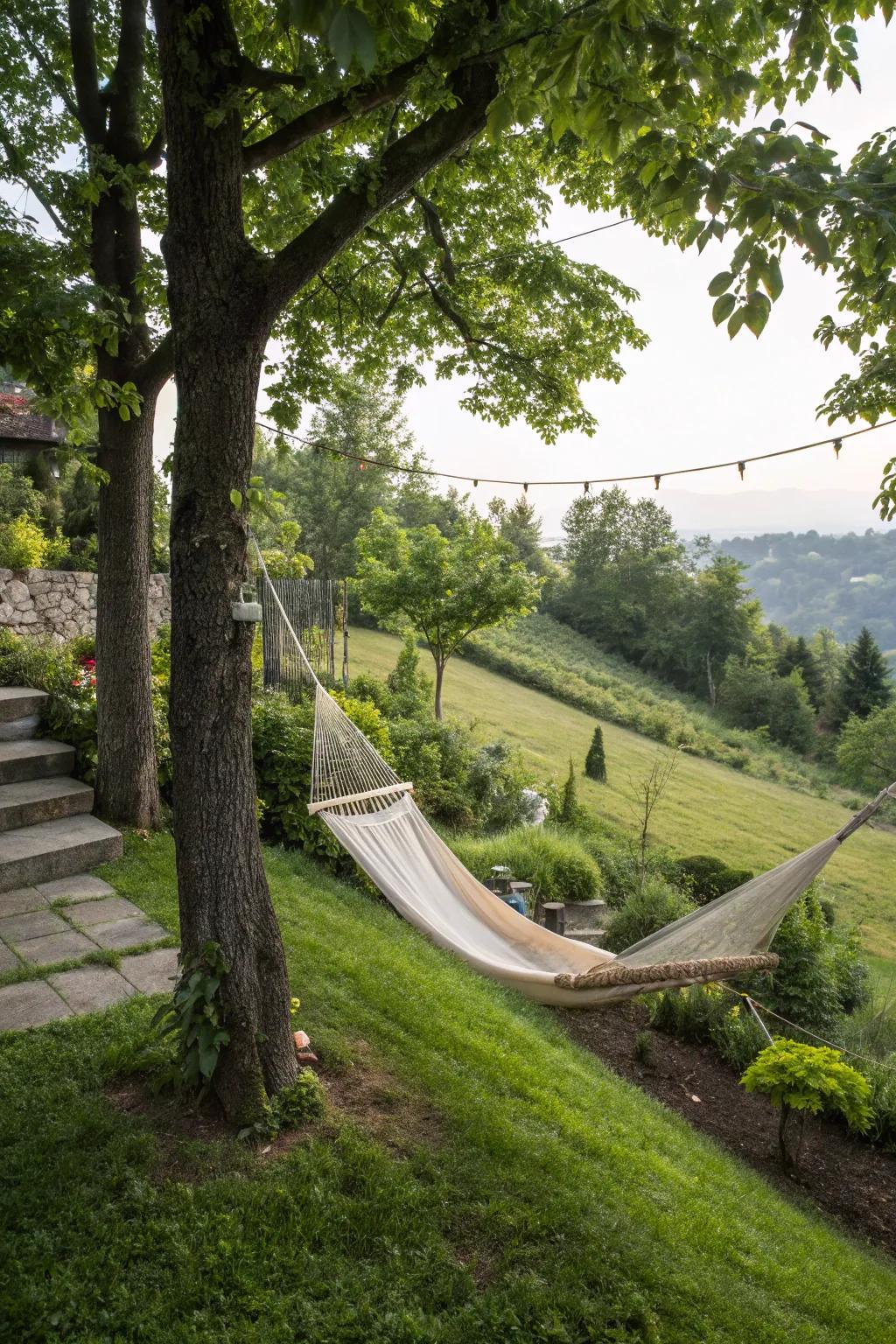
Hang a hammock between sturdy trees or posts for a cozy retreat. It’s my favorite spot for an afternoon nap or reading session with a view of the entire garden.
Consider these options:
- Outdoor Hammock with Spread Bar: Relax on a sturdy, comfortable hammock; ideal for lazy afternoons in your garden retreat.
- Adjustable Hammock Straps: Securely hang your hammock between trees with these durable, adjustable straps for easy setup.
- Weatherproof Hammock Cover: Protect your hammock from the elements with a durable, weatherproof cover for long-lasting use.
17. Wildflower Wonderland
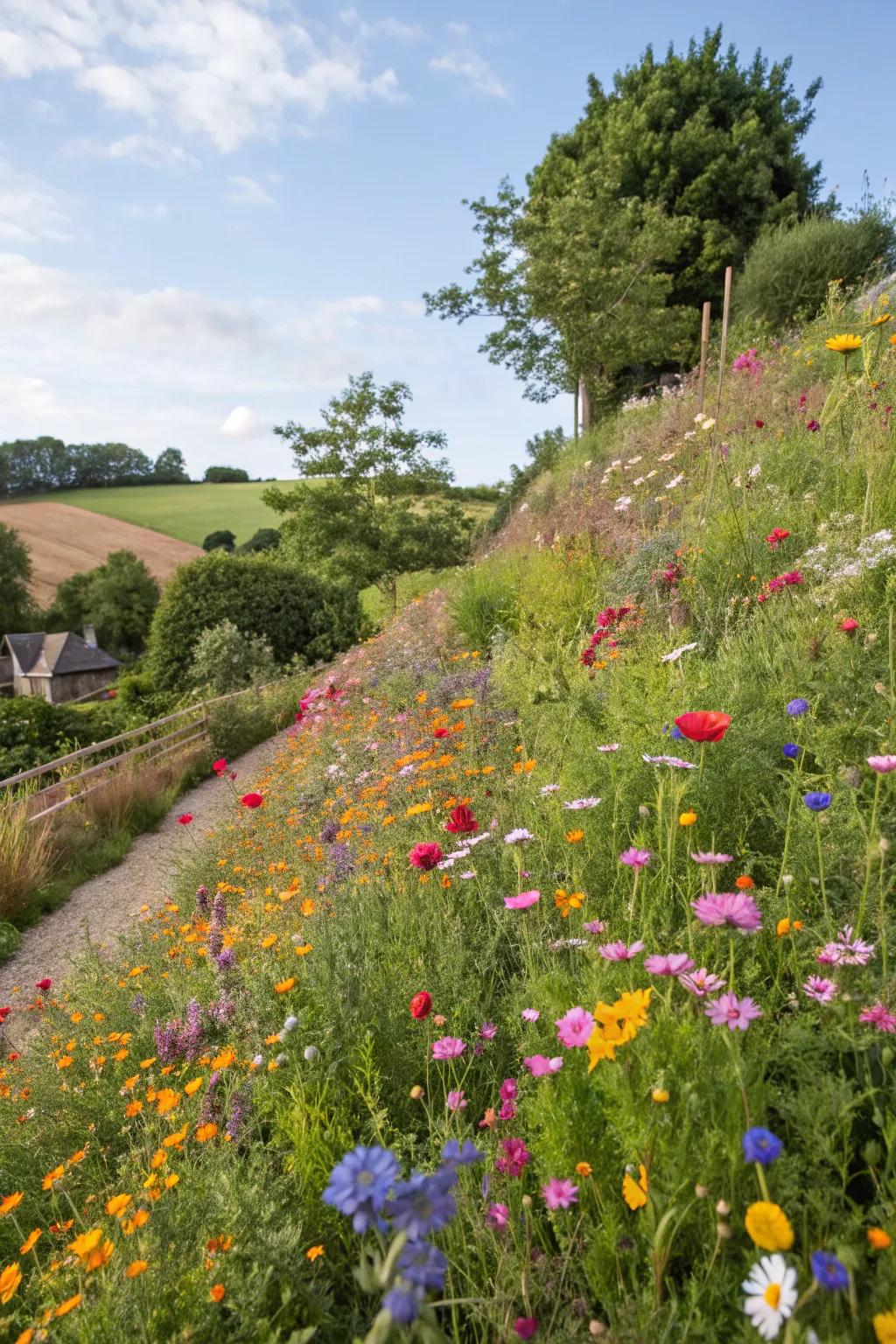
Planting a wildflower meadow on a slope can create a vibrant, low-maintenance landscape. I love watching the butterflies and bees that visit this colorful haven.
A few things you might like:
- Wildflower Seed Mix: Transform your slope with a vibrant wildflower mix, perfect for attracting bees and butterflies.
- Garden Soil Enhancer: Enhance your garden’s health with nutrient-rich soil, ensuring abundant wildflower growth on slopes.
- Bee and Butterfly Habitat: Encourage pollinators by placing a habitat among your wildflowers, creating a thriving ecosystem.
